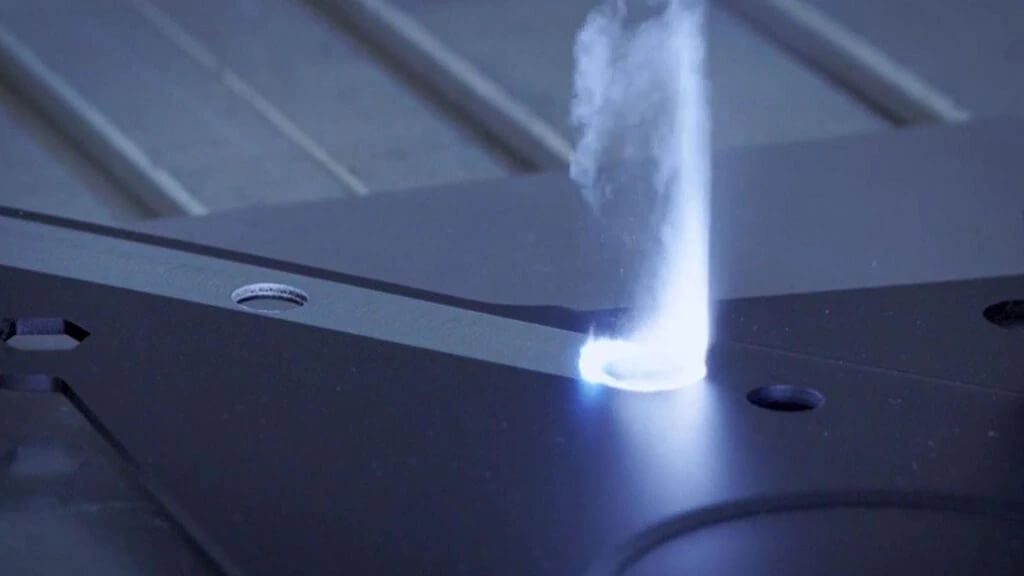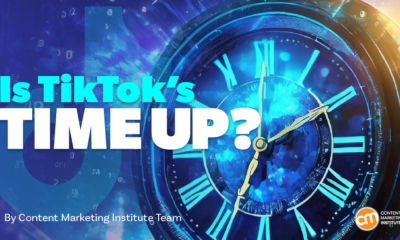TECHNOLOGY
Frequently Asked Questions About Laser Paint Removal

The current manufacturing industry has evolved rapidly, with modern innovations being applied in various scenarios.

Modern cleaning machines, such as laser paint removers, have replaced traditional processes, such as chemical corrosion, mechanical friction, and strong impact cleaning, which were time-consuming and largely ineffective.
However, being a new technology, many people still don’t fully understand how to remove paint with a laser. Below are common questions asked by those interested in the new paint removal technology.
How Does Laser Paint Removal Work?
Laser paint removal typically uses radiation to evaporate impurities from material surfaces. Laser pulses generate heat which affects the paint and other impurities. High temperatures in the material create high-pressure, forcing the impurities to evaporate.
Unlike traditional paint removal methods, laser paint removal is non-abrasive, non-contact, and very gentle on material substrates. Since most impurities evaporate, no waste is generated during the paint removal process.
The Benefits of Using a Laser to Remove Paint
Some advantages of laser cleaning include:
-
Low operating costs compared to traditional paint removal methods
-
No damage to the underlying material
-
Eco-friendly
-
Fast and efficient
-
Produces minimal to no waste, which complies with EPA regulations
Where Can Laser Cleaning be Used?
Apart from paint removal, laser cleaners can be used in:
-
Deoxidization or rust removal – Laser cleaners are widely known for rust removal. Lasers can remove rust from all materials, including nuts and large machinery.
-
Removing coating – Cleaning with a laser is the best way to prepare steel before welding, gluing, or soldiering.
-
Degreasing – Commonly used in production and processing industries. Laser efficiently removes dirt, moisture, grease, and other contaminants.
-
Restoration – Laser cleaning effectively restores worn-out objects. It cleans soot and smoke-stained materials.
What Amount of Power is Required For Paint Removal?
Laser cleaners have power ranging between 100W and 2000W. While these lasers can provide the same cleaning results, they differ in the time taken to clean and the quality of substrate finish. Before removing paint with a laser, you should consider the size and type of surface to be cleaned.
These machines are also either water-cooled or air-cooled. Water-cooled laser machines can operate for a long period before requiring a cooling shutdown. Air-cooled laser machines are cooled by fans or cooling fins using environmental air while water-cooled machines require a condenser or chiller.
Below are the three categories of laser cleaners:
-
Low power laser cleaners – These have a power rating of 100W and are air-cooled. Best for cleaning rust and NDT, especially in hard-to-access areas.
-
Medium power laser cleaners – These have a power rating of 200W to 300W. Best for corrosion, paint, stains, and rust cleaning.
-
High-power laser cleaners – These have power ratings between 500W and 2000W. Cleans rust, heavy paint, and coating.
Is Laser Cleaning Safe?
All-laser cleaners are classified as category 4, so you should follow specific regulations to use them safely. For instance, lasers produce infrared rays of 1064 to 1070nm wavelength. Wear protective goggles before cleaning with laser machines. The EN 60825-1 guide outlines other usage specifications.
Does Laser Cleaning Harm the Environment?
The cleaning process uses pure light and doesn’t require additional chemicals. Laser cleaning doesn’t generate waste, unlike sandblasting, where sand used in cleaning is contaminated and should be cleaned after.
Can Lasers be Used to Strip Paint From Wood or Bricks?
Using a laser to strip paint from wood or bricks is not recommended. Brick material is a porous substrate, while wood is combustible and can ignite upon exposure to laser beams.
Is Laser Paint Removal Suitable For Historic Restorations or Conservations?
While it can be used to clean historic restorations, it depends on the contaminant and nature of substrate material. Laser cleaning solutions have previously been used to clean historic conservations, such as the U.S Capitol building and pyramids.
How Fast Does a Laser Clean?
There is no exact time estimation of how long it takes to remove paint using a laser. The time taken depends on your chosen laser system, settings used, contaminant, thickness, and substrate geometry. Nonetheless, the maximum cleaning rate is around two square feet per minute.
Endnote
Laser removal is a new technology that overcomes several pitfalls associated with traditional rust and paint removal. You can use this method to give new life to pipes, bridges, and other large projects. However, while the process of removing paint using a laser isn’t complicated, you should observe various precautions. Be sure to contact a reliable paint removal solution service provider.
Source link
TECHNOLOGY
Next-gen chips, Amazon Q, and speedy S3

AWS re:Invent, which has been taking place from November 27 and runs to December 1, has had its usual plethora of announcements: a total of 21 at time of print.
Perhaps not surprisingly, given the huge potential impact of generative AI – ChatGPT officially turns one year old today – a lot of focus has been on the AI side for AWS’ announcements, including a major partnership inked with NVIDIA across infrastructure, software, and services.
Yet there has been plenty more announced at the Las Vegas jamboree besides. Here, CloudTech rounds up the best of the rest:
Next-generation chips
This was the other major AI-focused announcement at re:Invent: the launch of two new chips, AWS Graviton4 and AWS Trainium2, for training and running AI and machine learning (ML) models, among other customer workloads. Graviton4 shapes up against its predecessor with 30% better compute performance, 50% more cores and 75% more memory bandwidth, while Trainium2 delivers up to four times faster training than before and will be able to be deployed in EC2 UltraClusters of up to 100,000 chips.
The EC2 UltraClusters are designed to ‘deliver the highest performance, most energy efficient AI model training infrastructure in the cloud’, as AWS puts it. With it, customers will be able to train large language models in ‘a fraction of the time’, as well as double energy efficiency.
As ever, AWS offers customers who are already utilising these tools. Databricks, Epic and SAP are among the companies cited as using the new AWS-designed chips.
Zero-ETL integrations
AWS announced new Amazon Aurora PostgreSQL, Amazon DynamoDB, and Amazon Relational Database Services (Amazon RDS) for MySQL integrations with Amazon Redshift, AWS’ cloud data warehouse. The zero-ETL integrations – eliminating the need to build ETL (extract, transform, load) data pipelines – make it easier to connect and analyse transactional data across various relational and non-relational databases in Amazon Redshift.
A simple example of how zero-ETL functions can be seen is in a hypothetical company which stores transactional data – time of transaction, items bought, where the transaction occurred – in a relational database, but use another analytics tool to analyse data in a non-relational database. To connect it all up, companies would previously have to construct ETL data pipelines which are a time and money sink.
The latest integrations “build on AWS’s zero-ETL foundation… so customers can quickly and easily connect all of their data, no matter where it lives,” the company said.
Amazon S3 Express One Zone
AWS announced the general availability of Amazon S3 Express One Zone, a new storage class purpose-built for customers’ most frequently-accessed data. Data access speed is up to 10 times faster and request costs up to 50% lower than standard S3. Companies can also opt to collocate their Amazon S3 Express One Zone data in the same availability zone as their compute resources.
Companies and partners who are using Amazon S3 Express One Zone include ChaosSearch, Cloudera, and Pinterest.
Amazon Q
A new product, and an interesting pivot, again with generative AI at its core. Amazon Q was announced as a ‘new type of generative AI-powered assistant’ which can be tailored to a customer’s business. “Customers can get fast, relevant answers to pressing questions, generate content, and take actions – all informed by a customer’s information repositories, code, and enterprise systems,” AWS added. The service also can assist companies building on AWS, as well as companies using AWS applications for business intelligence, contact centres, and supply chain management.
Customers cited as early adopters include Accenture, BMW and Wunderkind.
Want to learn more about cybersecurity and the cloud from industry leaders? Check out Cyber Security & Cloud Expo taking place in Amsterdam, California, and London. Explore other upcoming enterprise technology events and webinars powered by TechForge here.
TECHNOLOGY
HCLTech and Cisco create collaborative hybrid workplaces

Digital comms specialist Cisco and global tech firm HCLTech have teamed up to launch Meeting-Rooms-as-a-Service (MRaaS).
Available on a subscription model, this solution modernises legacy meeting rooms and enables users to join meetings from any meeting solution provider using Webex devices.
The MRaaS solution helps enterprises simplify the design, implementation and maintenance of integrated meeting rooms, enabling seamless collaboration for their globally distributed hybrid workforces.
Rakshit Ghura, senior VP and Global head of digital workplace services, HCLTech, said: “MRaaS combines our consulting and managed services expertise with Cisco’s proficiency in Webex devices to change the way employees conceptualise, organise and interact in a collaborative environment for a modern hybrid work model.
“The common vision of our partnership is to elevate the collaboration experience at work and drive productivity through modern meeting rooms.”
Alexandra Zagury, VP of partner managed and as-a-Service Sales at Cisco, said: “Our partnership with HCLTech helps our clients transform their offices through cost-effective managed services that support the ongoing evolution of workspaces.
“As we reimagine the modern office, we are making it easier to support collaboration and productivity among workers, whether they are in the office or elsewhere.”
Cisco’s Webex collaboration devices harness the power of artificial intelligence to offer intuitive, seamless collaboration experiences, enabling meeting rooms with smart features such as meeting zones, intelligent people framing, optimised attendee audio and background noise removal, among others.
Want to learn more about cybersecurity and the cloud from industry leaders? Check out Cyber Security & Cloud Expo taking place in Amsterdam, California, and London. Explore other upcoming enterprise technology events and webinars powered by TechForge here.
TECHNOLOGY
Canonical releases low-touch private cloud MicroCloud

Canonical has announced the general availability of MicroCloud, a low-touch, open source cloud solution. MicroCloud is part of Canonical’s growing cloud infrastructure portfolio.
It is purpose-built for scalable clusters and edge deployments for all types of enterprises. It is designed with simplicity, security and automation in mind, minimising the time and effort to both deploy and maintain it. Conveniently, enterprise support for MicroCloud is offered as part of Canonical’s Ubuntu Pro subscription, with several support tiers available, and priced per node.
MicroClouds are optimised for repeatable and reliable remote deployments. A single command initiates the orchestration and clustering of various components with minimal involvement by the user, resulting in a fully functional cloud within minutes. This simplified deployment process significantly reduces the barrier to entry, putting a production-grade cloud at everyone’s fingertips.
Juan Manuel Ventura, head of architectures & technologies at Spindox, said: “Cloud computing is not only about technology, it’s the beating heart of any modern industrial transformation, driving agility and innovation. Our mission is to provide our customers with the most effective ways to innovate and bring value; having a complexity-free cloud infrastructure is one important piece of that puzzle. With MicroCloud, the focus shifts away from struggling with cloud operations to solving real business challenges” says
In addition to seamless deployment, MicroCloud prioritises security and ease of maintenance. All MicroCloud components are built with strict confinement for increased security, with over-the-air transactional updates that preserve data and roll back on errors automatically. Upgrades to newer versions are handled automatically and without downtime, with the mechanisms to hold or schedule them as needed.
With this approach, MicroCloud caters to both on-premise clouds but also edge deployments at remote locations, allowing organisations to use the same infrastructure primitives and services wherever they are needed. It is suitable for business-in-branch office locations or industrial use inside a factory, as well as distributed locations where the focus is on replicability and unattended operations.
Cedric Gegout, VP of product at Canonical, said: “As data becomes more distributed, the infrastructure has to follow. Cloud computing is now distributed, spanning across data centres, far and near edge computing appliances. MicroCloud is our answer to that.
“By packaging known infrastructure primitives in a portable and unattended way, we are delivering a simpler, more prescriptive cloud experience that makes zero-ops a reality for many Industries.“
MicroCloud’s lightweight architecture makes it usable on both commodity and high-end hardware, with several ways to further reduce its footprint depending on your workload needs. In addition to the standard Ubuntu Server or Desktop, MicroClouds can be run on Ubuntu Core – a lightweight OS optimised for the edge. With Ubuntu Core, MicroClouds are a perfect solution for far-edge locations with limited computing capabilities. Users can choose to run their workloads using Kubernetes or via system containers. System containers based on LXD behave similarly to traditional VMs but consume fewer resources while providing bare-metal performance.
Coupled with Canonical’s Ubuntu Pro + Support subscription, MicroCloud users can benefit from an enterprise-grade open source cloud solution that is fully supported and with better economics. An Ubuntu Pro subscription offers security maintenance for the broadest collection of open-source software available from a single vendor today. It covers over 30k packages with a consistent security maintenance commitment, and additional features such as kernel livepatch, systems management at scale, certified compliance and hardening profiles enabling easy adoption for enterprises. With per-node pricing and no hidden fees, customers can rest assured that their environment is secure and supported without the expensive price tag typically associated with cloud solutions.
Want to learn more about cybersecurity and the cloud from industry leaders? Check out Cyber Security & Cloud Expo taking place in Amsterdam, California, and London. Explore other upcoming enterprise technology events and webinars powered by TechForge here.
-

 SEARCHENGINES6 days ago
SEARCHENGINES6 days agoGoogle Core Update Volatility, Helpful Content Update Gone, Dangerous Google Search Results & Google Ads Confusion
-

 SEO6 days ago
SEO6 days ago10 Paid Search & PPC Planning Best Practices
-

 MARKETING7 days ago
MARKETING7 days ago2 Ways to Take Back the Power in Your Business: Part 2
-

 MARKETING5 days ago
MARKETING5 days ago5 Psychological Tactics to Write Better Emails
-

 SEARCHENGINES5 days ago
SEARCHENGINES5 days agoWeekend Google Core Ranking Volatility
-

 SEO6 days ago
SEO6 days agoWordPress Releases A Performance Plugin For “Near-Instant Load Times”
-

 MARKETING6 days ago
MARKETING6 days agoThe power of program management in martech
-
SEARCHENGINES4 days ago
Daily Search Forum Recap: April 15, 2024















You must be logged in to post a comment Login